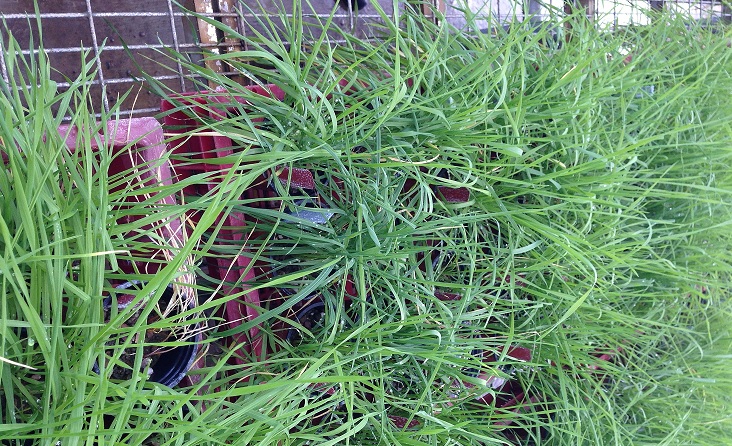
The high number of black-grass samples tested by ADAS this autumn, that were highly resistant, has underlined the importance of using pre-emergence herbicides and including cultural control strategies into weed control programmes, as resistance becomes increasingly prevalent.
Following the offer of free black- grass resistant tests to farmers this summer from BASF, ADAS has now tested over 125 black-grass samples for resistance. “All of these samples have now been tested for the three key resistance mechanisms: Enhanced Metabolism Resistance (EMR), ACCase target site resistance (ACCase-TSR) and ALS target site resistance (ALS-TSR) – effectively we are testing the resistance to different modes of action of a range of herbicides,” says Lynn Tatnell of ADAS.
“EMR or non-target site resistance is the most common resistance found in black-grass and this can affect all herbicides. EMR resistance is normally a partial resistance and increases slowly. Target site resistance however affects fop, dims and den herbicides like Topik and Axial, it results in very poor control and increases rapidly in a black-grass population. This is the same for ALS herbicides such as Atlantis and Broadway products.”
“The results are recorded by level of resistance; S signifies that the black-grass is still susceptible to the herbicide and should lead to effective control. R or RR indicates that there is some level of resistance and RRR means that there is significant resistance which will cause poor control from the herbicide.”
“Where samples show a RR rating for EMR, there is still some opportunity for control from EMR based herbicides; a pre-emergence application is essential and herbicides should be applied in optimal conditions to prevent further resistance developing. Cultural control should be integrated in these cases to manage any further increase in levels of resistance. Where there is a RRR result for EMR then it is critical that a range of herbicides with different modes of action are used as well as cultural control mechanisms.”
“For samples with a RR to ACCase and ALS (target site resistance) this indicates that control with herbicides based on these modes of action will be sub optimal, resistance can build quickly in these populations underlining the importance of other modes of action. In the case of a RRR result, this shows that control will be very poor and that considering other modes of action is vital as well as considering cultural control methods.”
“Of all the 120 samples tested, 66% showed RR or RRR resistance rating for enhanced metabolism, 85% were RR or RRR for ACCase resistance and 73 % showed RR or RRR resistance to ALS.”
“What is very concerning is that 41% of the black grass samples tested were resistant to all three groups of chemistry – so in these cases using alternative modes of action and integrating cultural control mechanisms is the only way to achieve any adequate black-grass control- and this is what farmers need to be seriously considering going forward. A management strategy over at least three to five years should be considered and not just a one-year change,” she says.
Sarah Cook, weed biologist at ADAS, recommends that non chemical or cultural control of black-grass should be an integral part of any black-grass management programme. “The key to successful control is to keep populations down so it is important to recognise the contribution from ploughing at least once in every three or five years, delaying drilling, increasing seed rates, spring cropping and fallowing.”
“For example, just by ploughing or leaving a field fallow can reduce numbers by as much as 67- 70%. I think last season many growers recognised the benefits to be gained by spring cropping which can reduce populations by as much as 80%.”
“Once black-grass numbers are being managed as much as possible through cultural control, this should result in a much more favourable climate for the herbicides to perform. Planning an effective anti-resistance strategy starts by making the most of any stale seedbed opportunities and then using pre or peri emergence herbicides wherever possible, which have a lower resistance risk and putting less emphasis on the post emergence herbicides as these are the groups that are increasingly at risk from resistance,” adds Sarah Mountford Smith, cereal herbicides product manager with BASF.
“Its key to aim for 100% control in the autumn through a chemical and cultural approach and this means going on early and using full rates of the pre-emergence herbicide. From the numerous independent and in-house trials that BASF has carried out over the last five years, we have seen the best autumn results to come from pre-emergence application of Avadex granules followed by 4 l/ha Crystal + 0.2 l/ha Hurricane at 1 leaf of the crop. Using this range of modes of actions that are at low risk to resistance will ensure that there is less pressure on the post-emergence type options such as Atlantis.
“However, in any programme it is important to monitor success and recognise the importance of rotating the cultivations, cropping and modes of action to prevent and manage back-grass resistance.”
